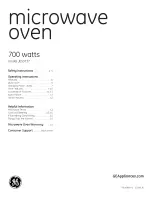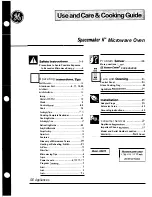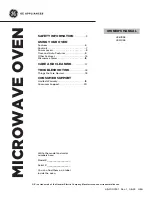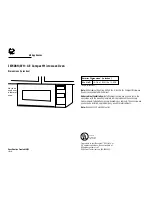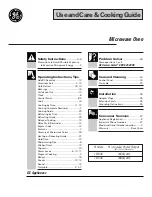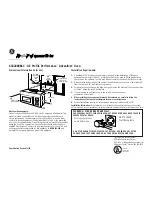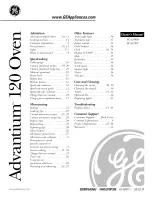
3
15. Some products such as whole eggs and sealed containers, for example,
closed glass jars, may explode and should not be heated in this oven.
16. To reduce the risk of fire in the oven cavity:
a.
DO NOT
overcook food.
b.
DO NOT
leave the microwave unattended if paper, plastic or other
combustible materials are placed inside the oven to facilitate cooking.
c. Remove wire twist-ties from paper or plastic bags before placing bag
in oven.
17. If materials inside the oven should ignite,
a. Keep oven door CLOSED
b. Turn oven off
c. Disconnect the power cord or shut off power at the fuse
or circuit breaker panel
18. Liquids, such as water, coffee, or tea are able to be overheated beyond
the boiling point without appearing to be boiling due to surface tension
of the liquid. Visible bubbling or boiling when the container is removed
from the microwave oven is not always present.
THIS COULD RESULT
IN VERY HOT LIQUIDS SUDDENLY BOILING OVER WHEN A SPOON
OR OTHER UTENSIL IS INSERTED INTO THE LIQUID.
To reduce the risk
of injury to persons:
a.
DO NOT
overheat the liquid.
b. Stir the liquid both before and halfway through heating it.
c.
DO NOT
use straight-sided containers with narrow necks.
d. After heating, allow the container to stand in the microwave oven
for a short time before removing the container.
e. Use extreme care when inserting a spoon or other utensil into
the container.
SAVE THESE INSTRUCTIONS
WARNING! TO AVOID THE RISK OF FIRE
1.
DO NOT
operate the oven empty. The microwave energy will reflect
continuously throughout the oven causing overheating and damage
if food or water is not present to absorb energy.
2.
DO NOT
store flammable materials next to, on top of, or in the oven.
3.
DO NOT
dry clothes, newspapers or other materials in the oven. Or use
newspaper or paper bags for cooking.
4.
DO NOT
hot or strike the Control Panel. Damage to the controls may occur
Booklet_MW-2078_Eng.qxd:Salton Booklet 4/30/10 11:42 AM Page 3



















